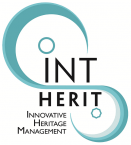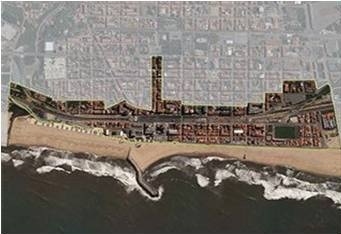Summary
The “Urban rehabilitation Plan of Espinho’s Coastal Area (ARULE) focuses on the oldest and most central part of the city, chosen by the Municipality to initiate a process of urban rehabilitation, in its multiple aspects: physical, economic and social.
It integrates a set of actions of urban regeneration and improvement of the urban environment, namely: Rehabilitation of the public space (with the area of 10.5 ha), resulting from the burial of the Northern Railway Line, inserted in the Requalification Space Railroad Channel of the City of Espinho (ReCaFe), structuring in the city and that lacks of a new use. It includes the rehabilitation of buildings (public and private) with more than 30 years and / or in poor condition, as well as commercial spaces and other spaces, without restrictions on the use, including buildings, classified as architectural architectural interest.
Solutions offered by the case example
Taking advantage of the opportunity to co-finance the ReCaFE under a game plan, tourism of Portugal and the contract of the Strategic Plan for Urban Development (PEDU) under the NORTH 2020 programme, coupled with the support granted to the Urban rehabilitation, at the level of the built (private) under the financial Instrument IFRU 2020, in the form of loans and tax benefits, it was possible to initiate the urban rehabilitation process of the city, with a view to improving its urban environment .
The city and in concrete the most central part, is being the subject of a process of urban rehabilitation, at the level of public space, through the contract of Requalification of the railway channel of Espinho – ReCaFE, the responsibility of the municipality, and other works, The level of urban mobility and the requalification of the private building, promoted by residents.
It is an integrated implementation of several projects, transversal to several departments of the municipality (horizontal integration), which involves several public stakeholders (infrastructures of Portugal, tourism of Portugal; Municipality of Espinho) and private (investors, local agents and residents). For this it is necessary to define a new integrated and participatory governance model.
The integration of public investment with the private and its use of synergies, aims to create a space of excellence, structuring for the city, capable of enhancing the local economic and social development, attracting investment to the Area and therefore to establish and attract resident population.
This process of urban rehabilitation is expected to promote a greater environmental, urban and landscape quality of the central area of the city of Espinho, as a factor of territorial structuring, social welfare, competitiveness of Local and regional economies, as well as the establishment of the resident population.
Canal Space after burial and before the intervention of ReCafe
Building on the sustainable and integrated approach
The project INT-HERIT intends to discuss solutions to make more integrated the urban rehabilitation process of the city of Espinho: On the one hand the public investment, through the project of ReCaFE, already underway and on the other, private investment, through the Rehabilitation of the building, promoted by residents and economic agents and now taking the first steps.
The sustainability of the urban rehabilitation process depends on the integration of these two projects. The rehabilitation of the public space constitutes a catalyst for the rehabilitation of the building, the revitalisation of local trade and therefore the attraction of greater investment. In this measure, taking into account the structuring and fundamental character of this area so central to the city, which involves beyond the municipality, several stakeholders (public and private), it is essential to have an integration of public investment with the private, in order to Constitute an exemplary case of sustainability and integration.
Rehabilitation of the ongoing Canal Railway Space
Based on a participatory approach
It is an integrated and participated project, since its execution involves several stakeholders (public and private).
Through the ULG group it has been possible to create moments of debate and public discussion spaces in the context of the urban rehabilitation process and the different projects underway, encouraging the various stakeholders to become active agents in a process of Collective learning.
In a first phase, in the construction of the Tunnel and burial of the Railroad Line, involved the participation of “Infraestruturas de Portugal”, with the monitoring of the municipality.
In the design phase, it was the target of a competition of ideas at international level, with the participation of several teams of designers. In a more consolidated phase, already in the phase of architecture project, was presented publicly to the citizens and local agents, where they could present their suggestions.
In a second phase, when the project was carried out at the level of public space, including basic infrastructure, it involved several departments of the Municipality. As far as urban rehabilitation is concerned, private individuals, such as residents, merchants and service providers, are involved as promoters of the building rehabilitation process, regardless of their function. In the context of economic rehabilitation and the occupation and dynamization of the rehabilitated space, it involves investors and other economic agents;
Rehabilitated buildings
What difference has it made? How did the result indicator shift?
In the area of the city there is a new dynamic in the urban rehabilitation process, already extended to another area of urban rehabilitation, materialized: Area over 4000 m2 already rehabilitated, which include an area of public space and more buildings rehabilitated; there is a growing number of requests for rehabilitation of buildings under the IFRU; of request for inspection to obtain the level of conservation of the building and ongoing rehabilitation processes. There is also a growing number of requests to change the use of the building, specifically spaces for local accommodation.
Why should other EU cities use it?
As the integrated implementation of several projects, transversal to several departments of the municipality and involving several public and private Stakeholders can generate more integrated, participatory and sustainable governance models.
In this way, the equipment becomes available in the public spaces more oriented to the needs of the users and in the case of the private building, the rehabilitation makes the city more harmonious.
Key Facts and Figures:
Start and end dates of case example
September 2017- December 2020
Date of preparation of this case example
May 2019
Who prepared the case example?
Espinho’s Team
Budget
The investment of the Municipality with the rehabilitation of the public space in the ReCaFe 13 191 519,01 €
Extra information and hyperlinks
http://portal.cm-espinho.pt/pt/galerias/recafe-requalificacao-do-canal-ferroviario-de-espinho
http://portal.cm-espinho.pt/pt/galerias/montagem-passagem-pedonal-a-norte-recafe
http://portal.cm-espinho.pt/pt/galerias/recafe-vai-dar-uma-nova-imagem-a-zona-costeira-da-cidade-jn
http://portal.cm-espinho.pt/pt/galerias/montagem-da-passagem-superior-pedonal-a-norte-recafe/









